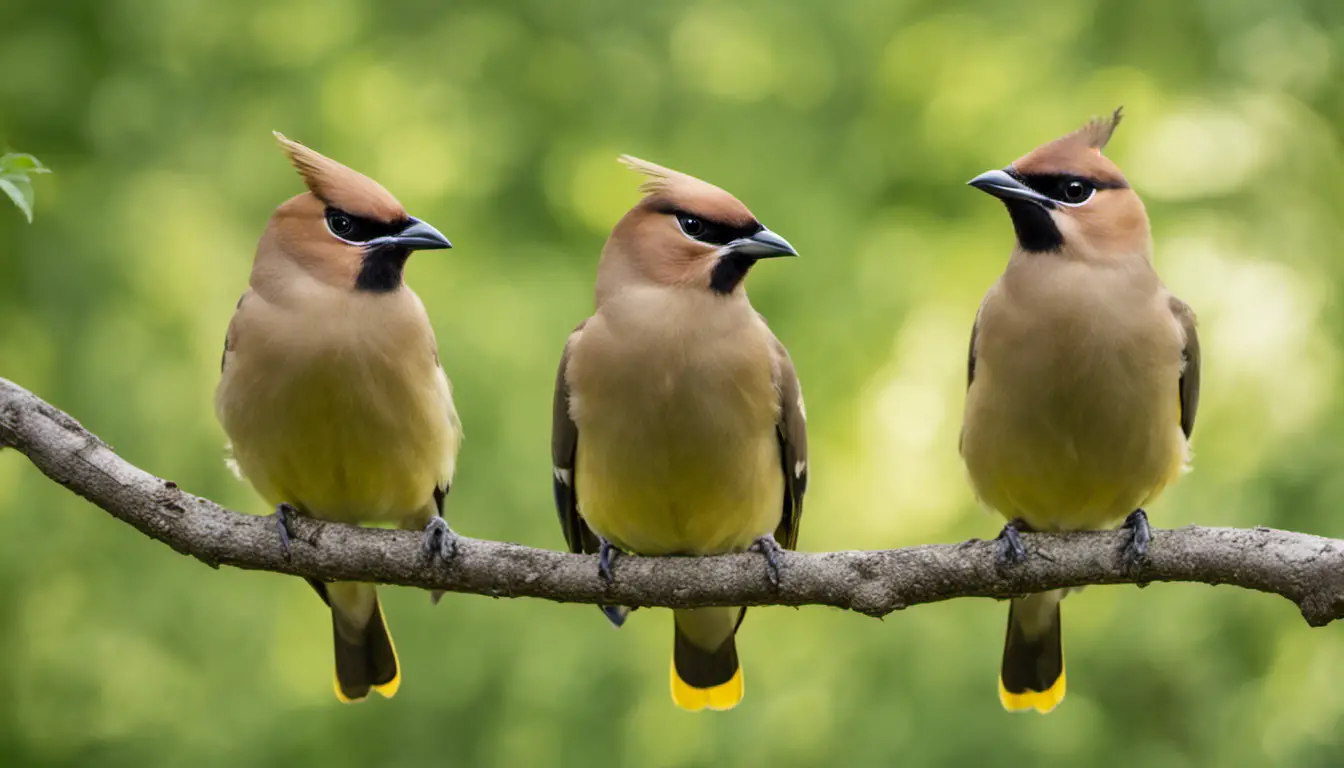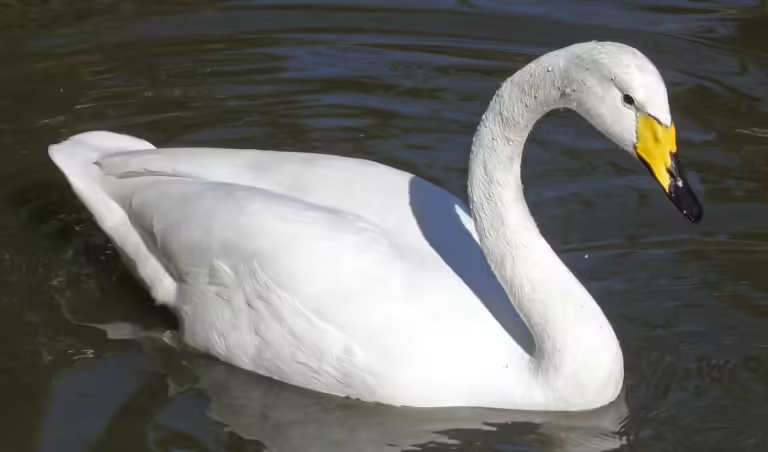Have you ever wondered about the enchanting melodies that fill the air when the cedar waxwings sing? Brace yourself for a captivating journey into the world of these elegant birds and their mesmerizing calls.
In this article, we will unravel the secrets behind the musical trills of cedar waxwings, unveiling the beauty and complexity of their melodies. Get ready to explore the anatomy of their calls and discover the meanings behind the various vocalizations they produce.
We will delve into the harmonies and trills that make their songs so unique and examine how calls play a crucial role in communication and social bonding among these birds. Additionally, we will explore how the environment influences the variations in their calls and the importance of these vocalizations in nest defense and territory protection.
So, join us on this fascinating journey as we appreciate the melodic wonders of cedar waxwing calls.
Key Takeaways
- Cedar waxwings are elegant birds found throughout North America, known for their distinctive crests, black masks, and yellow-tipped tails.
- They have melodic trills that range from high-pitched whistles to soft warbles and often gather in large flocks to feed on berries.
- Their calls have a rhythmic cadence and intertwining harmony, gradually increasing in intensity and reaching a crescendo, creating a sense of peace and serenity.
- Cedar waxwings use different types of calls for communication within the flock, courtship displays, and as alarm calls to warn against potential threats. These calls serve to establish social dynamics, attract mates, defend nests and territories, and coordinate flock movements.
Introduction to Cedar Waxwings
These elegant birds, with their sleek plumage and distinctive crests, are a sight to behold. Found throughout North America, cedar waxwings are known for their social nature and their love for berries. Their deep, black masks and yellow-tipped tails are a striking contrast against their pale gray bodies.
Cedar waxwings are not only visually stunning but also possess a musical talent that sets them apart from other birds. Their trills, which can be heard during their courtship displays and group interactions, are a delight to the ears. The melodious notes, ranging from high-pitched whistles to soft warbles, create a symphony in the air.
Not only do cedar waxwings have a unique appearance and captivating songs, but they also have interesting behaviors. They often gather in large flocks, sometimes numbering in the hundreds, to feed on berries. Their synchronized movements and graceful flight patterns make for a mesmerizing spectacle.
To fully appreciate the beauty of cedar waxwings and their melodic trills, it is best to observe them in their natural habitat. Whether perched on a branch or engaged in an aerial acrobatic display, these birds are a true marvel of nature. So, grab your binoculars and get ready to be serenaded by the enchanting melodies of cedar waxwings.
Understanding the Anatomy of their Melodic Calls
Exploring the fascinating structure of their melodic calls reveals a symphony hidden within the wings of these graceful creatures. The cedar waxwings possess a unique ability to produce a wide range of musical trills, captivating the hearts of all who hear them.
To better understand the anatomy of their melodic calls, let’s dive into the elements that create their enchanting tunes:
- The cadence: Like a gentle breeze rustling through leaves, the waxwings’ calls have a rhythmic cadence that soothes the soul.
- The harmonies: Their melodic calls intertwine in perfect harmony, creating a chorus that resonates in the air and echoes through the trees.
- The crescendos: Just as a symphony builds to a climactic moment, the waxwings’ calls gradually increase in intensity, reaching a crescendo that leaves you breathless.
Imagine yourself in a tranquil forest, amidst the splendor of nature, as you listen to the melodic calls of cedar waxwings. Feel the tranquility wash over you as their symphony of melodies fills the air. With each trill, their graceful wings carry you away to a world of peace and serenity. Embrace the magic of their music and let it transport you to a place where harmony reigns supreme.
The Variety of Calls and their Meanings
Immerse yourself in a symphony of diverse melodies, each carrying its own unique meaning. The cedar waxwing, with its elegant appearance and graceful flight, is known for its enchanting vocalizations. These birds have a wide range of calls, each serving a specific purpose.
One of the most common calls of the cedar waxwing is the high-pitched whistle. This call is often used to communicate with other members of their flock and to coordinate their movements. It serves as a way to keep the group together, ensuring their safety and success.
Another call you might hear is the soft trill. This call is often used during courtship displays and is a way for the males to attract females. The soft, melodic trill is highly appealing and serves as a form of communication between potential mates.
In addition to these calls, cedar waxwings also have alarm calls. These calls are sharp and high-pitched, serving as a warning to the rest of the flock when there is a potential threat nearby. This helps the birds stay vigilant and protect themselves from predators.
Overall, the cedar waxwing’s calls are a complex language of their own. By understanding the variety of calls and their meanings, we can gain insight into the intricate social dynamics and behaviors of these elegant birds.
So next time you hear the melodious trills of the cedar waxwing, take a moment to appreciate the richness and meaning behind each unique call.
Exploring the Harmonies and Trills in their Songs
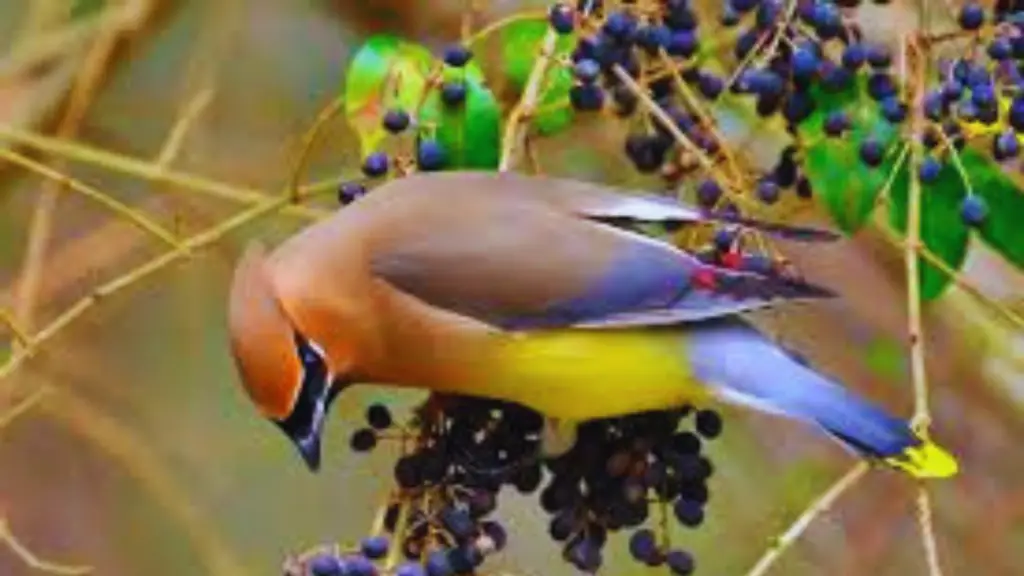
As the symphony of diverse melodies fills the air, the enchanting courtship displays of the cedar waxwings create a captivating harmony that resonates with potential mates. These elegant birds are known for their melodious songs, filled with trills and harmonies that are a delight to the ears.
The cedar waxwing’s song consists of a series of high-pitched trills and soft whistles, creating a beautiful and intricate melody. Their songs are not just random notes, but rather carefully crafted compositions. The cedar waxwings have a remarkable ability to produce trills, which are rapid and repeated notes that create a musical effect. These trills can vary in length and pitch, adding complexity and depth to their songs.
The harmonies created by these trills are mesmerizing, as the birds seamlessly transition between different pitches, creating a seamless and enchanting melody. The purpose of these harmonies and trills is to attract potential mates during the breeding season. The melodious songs of the cedar waxwings serve as a way for males to communicate their fitness and attract females. The more complex and well-executed the song, the more likely it is to captivate a mate.
Listening to the cedar waxwings’ songs is truly a magical experience. Their harmonies and trills create a symphony that is sure to captivate anyone who has the pleasure of hearing it.
The Role of Calls in Communication and Social Bonding
Listen closely to the enchanting melodies of the courtship calls, for they play a vital role in the communication and social bonding of these graceful creatures. The cedar waxwings use their calls to convey important messages and maintain strong connections within their flock. Here is why their calls are so crucial:
- Recognition: The unique calls of cedar waxwings help them recognize and locate each other in a crowded environment. By listening attentively to these calls, they can easily identify their fellow flock members and stay together as a cohesive unit.
- Coordination: The calls serve as a way for waxwings to coordinate their movements during various activities such as foraging or flying. The birds use different call patterns to signal their intentions, whether it is to initiate a feeding frenzy or to regroup after a predator’s threat.
- Bonding: The calls also play a significant role in strengthening social bonds among the cedar waxwings. They use specific call combinations during courtship displays, creating a symphony of trills and whistles that enhance their pair bonding and reproductive success.
By understanding the importance of these calls, we can gain a deeper appreciation for the intricate social dynamics and communication strategies of the cedar waxwings. So, next time you hear their melodious calls, take a moment to marvel at the beauty and complexity of their language.
Unique Vocalizations during Courtship and Mating
Now that you understand the importance of calls in communication and social bonding among cedar waxwings, let’s delve into their unique vocalizations during courtship and mating. Brace yourself for a symphony of enchanting melodies and intricate trills that will leave you in awe.
During courtship, male cedar waxwings showcase their musical prowess to attract a mate. Their songs are a harmonious blend of high-pitched trills and soft whistles, creating a captivating melody that reverberates through the air. These elaborate performances are not only a display of the male’s vocal abilities but also serve as a demonstration of his fitness and suitability as a partner.
As the male serenades his potential mate, he flutters his wings and hops from branch to branch, further enhancing his enchanting song. The female, captivated by his melodic courtship, responds with her own soft trills, creating a duet that solidifies their bond.
The unique vocalizations of cedar waxwings during courtship and mating are a testament to their elegance and sophistication. So, the next time you have the privilege of witnessing these birds in action, take a moment to appreciate the intricate melodies and the magical connection they create between these feathered lovers.
Vocal Mimicry and Imitation of Other Bird Species
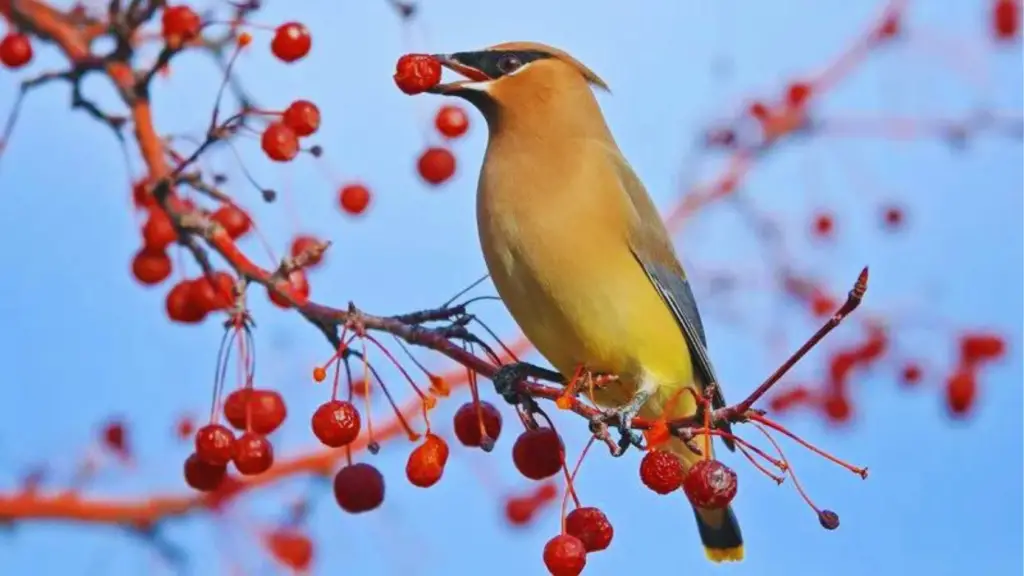
Prepare to be amazed as these captivating creatures showcase their ability to mimic and imitate the songs of other bird species, adding an extra layer of charm to their already enchanting repertoire. Cedar waxwings are not only skilled singers in their own right but also talented mimics, capable of replicating the calls of various bird species with astonishing accuracy. This remarkable ability allows them to blend in seamlessly with their surroundings, creating a symphony of sounds that can fool even the most discerning ears.
To give you a glimpse of their vocal prowess, imagine a vibrant forest scene bustling with life. In one corner, a cedar waxwing perches on a branch, its sleek gray plumage catching the sunlight. As it opens its beak, a melodious tune escapes, echoing through the trees. But wait, there’s more! Suddenly, the waxwing’s song seamlessly transitions into the cheerful warble of a robin, then effortlessly switches to the trill of a goldfinch. It’s as if the waxwing becomes a master of disguise, effortlessly imitating the songs of its avian counterparts.
To better understand the astonishing mimicry skills of the cedar waxwing, let’s take a closer look at a table showcasing some of the bird species it can imitate:
| Bird Species | Cedar Waxwing’s Imitation |
|---|---|
| Robin | Cheerful Warble |
| Goldfinch | Beautiful Trill |
| Blue Jay | Raucous Call |
| Song Sparrow | Melodic Chirp |
| Cardinal | Whistling Melody |
The table serves as a visual representation of the cedar waxwing’s versatility in imitating the calls of different bird species. These elegant birds not only possess a melodious voice of their own but also possess the remarkable ability to mimic and imitate, making them truly exceptional performers in the avian world. So, next time you hear a captivating melody in the trees, take a moment to appreciate the cedar waxwing’s skillful mimicry and the enchanting charm it adds to the symphony of nature.
The Influence of Environment on Call Variation
Immersed in their natural surroundings and influenced by the environment, these captivating creatures bring a unique twist to their melodic repertoire through the variation of their calls. The world around the cedar waxwings shapes their diverse vocal range, which is what gives them their elegant appearance and alluring trills. Here are five ways in which the environment influences the call variation of these beautiful birds:
- Seasonal Changes: As the seasons shift, so does the soundscape of the cedar waxwings. Their calls adapt to reflect the different times of the year, whether it’s the joyous songs of spring or the subdued notes of winter.
- Habitat Features: The specific characteristics of their habitat, such as the presence of water bodies or dense vegetation, can influence the way cedar waxwings vocalize. They may adjust their calls to resonate better in certain environments or to communicate effectively with their flock.
- Food Availability: The availability of their preferred food sources, such as berries and insects, can also shape the calls of cedar waxwings. They may produce distinct calls when they find a bountiful food supply or use specific vocalizations to coordinate foraging activities.
- Social Interactions: The social dynamics within a flock can influence call variation. Cedar waxwings use different calls to establish territory, attract mates, or communicate with their flock members. These social interactions play a crucial role in shaping the vocal repertoire of these birds.
- Human Influence: Lastly, the presence of human activities and urbanization can impact the calls of cedar waxwings. They may incorporate sounds from human environments, such as car alarms or sirens, into their melodic trills.
Through these environmental influences, the calls of cedar waxwings become a reflection of their surroundings, adding depth and complexity to their already mesmerizing songs.
The Importance of Calls in Nest Defense and Territory Protection
Imagine yourself in a world where every sound holds the key to defending your nest and protecting your territory. For the elegant cedar waxwing, this is their reality. Their calls play a crucial role in nest defense and territory protection.
These birds have a distinct trilling call that serves as a warning signal to potential threats. When a predator approaches their nest, the waxwings emit a high-pitched, rapid trill that alerts other members of their flock. This call not only warns their own offspring but also mobilizes the entire group to form a united front against the intruder.
The importance of calls in nest defense goes beyond warning of danger. Cedar waxwings also use their calls to communicate with their flock members during territory disputes. When two groups of waxwings come into conflict over a particular area, they engage in vocal battles, with each group trying to outdo the other in volume and intensity. These vocal contests can escalate into physical confrontations if the rivals are evenly matched. Through their calls, the waxwings establish dominance and assert their ownership of the territory.
In conclusion, calls play a vital role in the lives of cedar waxwings. These birds rely on their trilling calls to defend their nests from predators and protect their territories from rival groups. In their world, the ability to communicate effectively through sound is crucial for survival.
The Musicality of Cedar Waxwing Calls
As we discussed earlier, cedar waxwings use their calls not only for nest defense and territory protection but also for another fascinating purpose: music! Yes, you heard it right! These elegant birds are not only skilled in flying and building nests but also possess a musical talent.
Imagine standing in a serene garden, the sweet scent of flowers wafting through the air, and the melodious trills of cedar waxwings filling your ears. It’s a symphony of nature’s finest performers. The waxwings’ calls are not just random notes; they are carefully crafted musical compositions.
To help you understand the musicality of cedar waxwing calls, let’s take a closer look at their repertoire. Below is a table showcasing some of the common calls and their meanings:
| Call | Meaning |
|---|---|
| High-pitched trill | Attraction and bonding with other flock members |
| Whistled note | Location of food sources |
| Descending rattle | Warning of predators nearby |
| Soft chirp | Communication between mates during courtship |
| Harmonious chorus | Celebration of successful nest defense or territory takeover |
Isn’t it fascinating how these birds communicate using their own unique language of music? So next time you hear the melodious trills of cedar waxwings, take a moment to appreciate the beauty and complexity of their musical calls.
Appreciating the Beauty and Complexity of their Melodies
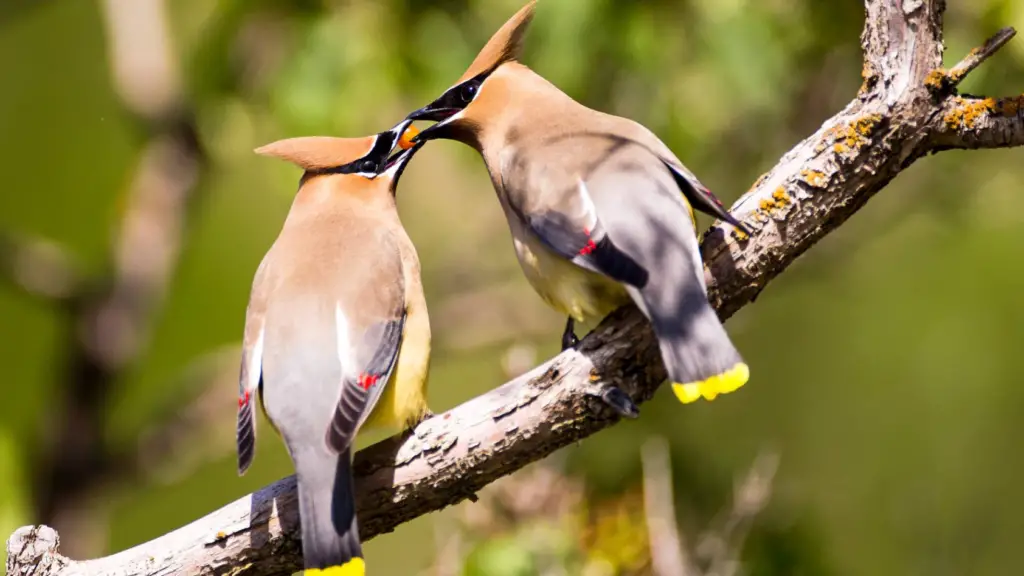
Take a moment to truly appreciate the intricate beauty and captivating complexity of their enchanting melodies. When you hear the melodious trills of the cedar waxwing, you can’t help but be transported to a world of pure musical bliss.
These elegant birds have a unique way of communicating through their songs, and it’s a privilege to witness their melodic performances.
As you listen to their calls, you’ll notice the seamless blend of different notes and tones. The waxwings have a remarkable ability to create a harmonious melody that resonates with your soul. Their songs are filled with a combination of high-pitched trills, soft whistles, and gentle chirps, creating a symphony of sound that is both soothing and uplifting.
What makes their melodies even more fascinating is the complexity of their arrangements. Each call is carefully crafted, with variations in pitch, rhythm, and duration. It’s as if the waxwings are composing a masterpiece, improvising and experimenting with different musical elements. Their songs are constantly evolving, never repeating the same pattern twice.
In addition to their intricate beauty, the cedar waxwing’s melodies also serve a purpose. They use their songs to communicate with each other, signaling for food, warning of danger, or attracting a mate. It’s a language that only they understand, a secret code that adds to the allure of their music.
So the next time you hear the melodious trills of the cedar waxwing, take a moment to appreciate the beauty and complexity of their melodies. Let their enchanting songs transport you to a world where music and nature intertwine, and let yourself be captivated by the magic of their musical performances.
Cedar Waxwing Calls: Frequently Asked Questions
How long do Cedar Waxwings live?
Cedar waxwings live for about 6-7 years. They are known for their sleek appearance and distinctive trilling calls. These elegant birds are a joy to observe in the wild.
What is the diet of Cedar Waxwings?
Cedar waxwings have a unique diet, consisting mostly of fruit. They devour berries, cherries, and even crabapples. So, if you wanna see these elegant birds, just follow the fruity trail.
How far can the calls of Cedar Waxwings travel?
Cedar waxwing calls can travel surprisingly far! These elegant birds have a strong voice that can carry their melodic trills for miles, making them easily heard by other birds and birdwatchers alike.
Do Cedar Waxwings migrate?
Yes, cedar waxwings migrate. They travel in flocks, moving from their breeding grounds to warmer areas for the winter. They can cover long distances in search of food and nesting sites.
What are the predators of Cedar Waxwings?
The predators of cedar waxwings include raptors like hawks and owls, as well as snakes, squirrels, and domestic cats. These animals prey on the waxwings for food, making them a constant threat in their environment.
Conclusion: Cedar Waxwing Calls
So, now you understand the enchanting world of cedar waxwing calls. From their melodic trills to the harmonies in their songs, these elegant birds have a musicality that is truly captivating.
Have you ever wondered how such beautiful melodies can communicate meaning and build social bonds? And how does their environment influence the variation in their calls?
The importance of calls in nest defense and territory protection cannot be overlooked.
So, next time you hear the melodious call of a cedar waxwing, take a moment to appreciate the beauty and complexity of their melodies. Don’t you want to listen to their enchanting songs again and again?

